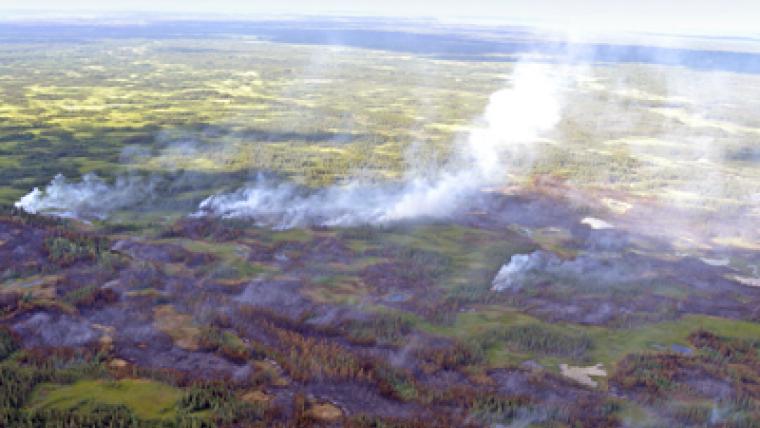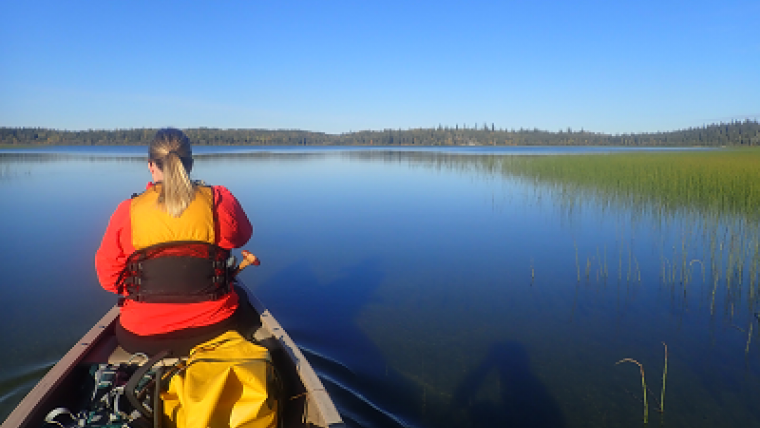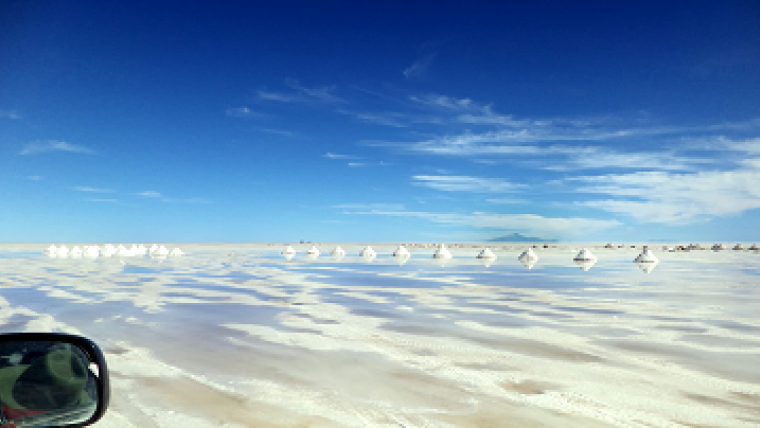Bridging traditional and scientific knowledge in Tuktoyaktuk
This is the first in a series of Simply Science articles exploring places where traditional Indigenous knowledge intersects with conventional core science. Incredible value can be found when community members are actively involved in scientific research conducted close to home. This approach is especially meaningful in remote corners of the land where people are experiencing the devastating effects of climate change right outside their front doors.
February 2023
The Hamlet of Tuktoyaktuk in the Northwest Territories lies at the very end of the first all-weather road to Canada’s Arctic Coast. The area is home to some of the most dramatic examples of climate change challenges anywhere on the planet. Researchers estimate that, within the next 20 years, the northwest portion of the hamlet could gradually disappear into the ocean due to coastal erosion while surrounding areas will experience increased flooding.

Deva-Lynn Pokiak prepares to cross over to Tuk Island to set up a time-lapse camera to monitor coastal erosion, which averages two metres each year.
Few people are more familiar with the region’s challenges than Deva-Lynn Pokiak. She was raised in the community, always out on the land camping, hunting, trapping and harvesting.
“The people of Tuktoyaktuk are closely attached to the land and waters,” says Deva-Lynn. “It’s what the people have known for years, generation to generation. To pass on knowledge, it can be as simple as passing along grandma’s secret recipe. We value the land, as we live off it and harvest foods off it, and we also treat it with deep respect.”
Deva-Lynn is now a community liaison officer in Tuktoyaktuk and works alongside Geological Survey of Canada researcher Dustin Whalen on a project called Nuna: Effective mitigation and adaptation to changing ground conditions for resilient coastal futures. The word Nuna means land, country and soil in the Inuvialuktun language. One of the project’s missions is to bring together a diverse team and provide them with tools and training so they can help make more accurate predictions of future erosion rates.
While the community has recently become a hot spot for tourists, it has long been a destination for researchers involved in a lengthy list of climate change studies. In her role, Deva-Lynn acts as a bridge between traditional knowledge and scientific knowledge to help corroborate and identify land changes and collect data.
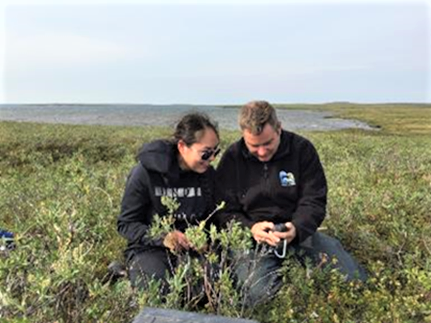
Dustin Whalen and Deva-Lynn learning and sharing while conducting coastal research. One of the challenges they face is travelling to monitoring sites, which they reach by boat during summer seasons and snowmobile during the winter.
Where Inuit Knowledge and science co-exist
Researchers looking to understand the effects of climate change in the North rely on the input of the Inuit people, who have first-hand experience with the land and a significant oral history of past events.
“The team brings forward questions that need solutions to community problems, such as erosion, land degrading, permafrost thaw and sea level rise,” says Dustin. “Our job is to provide geoscience information to help northerners respond to cumulative and sudden impacts of climate change and to understand how Inuit and scientific knowledge can co-exist along the coast and in Arctic coastal communities for the betterment of all.”
One particularly important aspect of Deva-Lynn’s job is being able to include her culture in her work because of how well she knows the land.
“I have lived here, witnessed the changes on the land,” says Deva-Lynn. “I know where traditional, historical and harvesting sites are that matter to the people in the area. To be part of a team to help identify where and what you want to research and focus on is rewarding. Together, we identify new threats the community is facing from climate change, sea level rise, permafrost thaw and eroding land. Knowing where the ground is most unstable can help us prepare for further and future infrastructure and planning.”
Opportunities of knowledge-sharing
Working with Natural Resources Canada has opened opportunities for the community to get involved in decision-making, data collecting and management. The shared knowledge is an important part of the project and allows for a deeper understanding of both the scientific and traditional knowledge aspects.
When asked what she enjoys most about this program, Deva-Lynn says it’s the fact that it opens up more opportunities for people in the community to work and be employed, and also that it allows the people to learn by helping and by collecting and managing their own data.
Through her work, Deva-Lynn meets so many people from so many unusual places, and she welcomes the opportunity to share her culture and knowledge with anyone who has the desire to learn. The opportunity to travel and meet new people is also a bonus, since Deva-Lynn especially enjoys the field work.
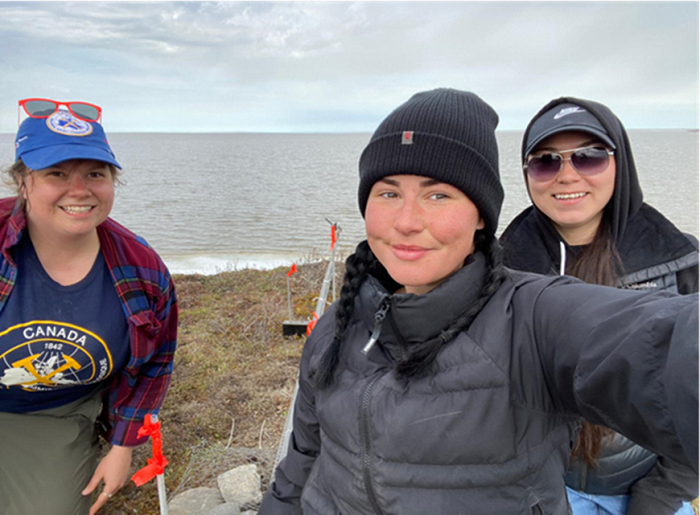
(Left to right) PhD student Eleanor Wratten (Northumbria University, U.K.), GSC post-doctorate fellow Rebecca Lee and Deva-Lynn share an inspired moment in the field.
One of the biggest challenges of working in a remote community is that training and learning are difficult, and it can be hard working alone for months. Deva-Lynn will have an opportunity to travel this year to GSC-Atlantic, in Dartmouth, Nova Scotia, for some hands-on learning with her team. Building capacity through shared experiences and opportunities in the North is a priority of the project.
When Deva-Lynn is not at work, she’s busy with her young daughter, who attends daycare. She also enjoys carpentry and snowboarding, which can be a challenging sport where there are no mountains in the area. But, just as she does with so many things, she makes it work.
The Nuna Project is funded by the Canada-Inuit Nunangat-United Kingdom Arctic Research Programme (CINUK). Deva-Lynn’s work also supports the GSC’s Climate Change Geoscience program, the Coastal Dynamics Activity plan and the GEM-GeoNorth program. For more information about Deva-Lynn and her team’s work, visit FutureTuktoyaktuk.org
For more information:
Permafrost thaw brings major problems to Northern Arctic communities (article
Page details
- Date modified:
